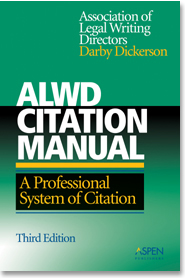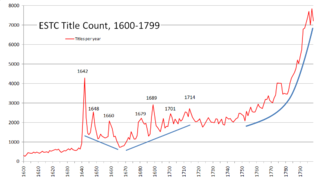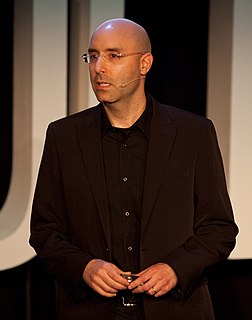 W
WBibliography, as a discipline, is traditionally the academic study of books as physical, cultural objects; in this sense, it is also known as bibliology. English author and bibliographer John Carter describes bibliography as a word having two senses: one, a list of books for further study or of works consulted by an author ; the other one, applicable for collectors, is "the study of books as physical objects" and "the systematic description of books as objects".
 W
WThe ACS Style is a set of standards for writing documents relating to chemistry, including a standard method of citation in academic publications, developed by the American Chemical Society (ACS).
 W
WALWD Guide to Legal Citation, formerly ALWD Citation Manual, is a style guide providing a legal citation system for the United States, compiled by the Association of Legal Writing Directors. Its first edition was published in 2000, under editor Darby Dickerson. Its sixth edition, under editor Coleen M. Barger, was released in May 2017 by Wolters Kluwer.
 W
WASA style is a widely accepted format for writing university research papers in the field of sociology. It specifies the arrangement and punctuation of footnotes and bibliographies. Standards for ASA style are specified in the ASA Style Guide, which is published by the American Sociological Association, the main scholarly organization for academic sociologists in the United States. The ASA Style Guide, published by the American Sociological Association, is designed to aid authors preparing manuscripts for ASA journals and publications.
 W
WThis Bibliography covers sources for Royal Navy history through the 18th and 19th centuries. Some sources may be duplicated in sections when appropriate. Among the contemporary and earlier historical accounts are primary sources, historical accounts, often derived from letters, dispatches, government and military records, captain's logs and diaries, etc., by people involved in or closely associated to the historical episode in question. Primary source material is either written by these people or often collected, compiled, and/or written and published by other editors also, sometimes many years after the historical subject has passed. Primary sources listed in this bibliography are denoted with an uppercase bold ' (P) before the book title. Publications that are in the public domain and available online for viewing in their entirety are denoted with E'Book.
 W
WThe Bibliography of Music Literature is an international bibliography of literature on music. It considers all kind of music and includes both current and older literature. Since 1968, the BMS editorial staff has also been working as the German committee for the Répertoire International de Littérature Musicale (RILM). The bibliography includes monographs, master’s theses and doctoral dissertations, articles and reviews from journals, Festschriften, conference proceedings, yearbooks, anthologies, and essays from critical reports. It contains printed media as well as online resources, data media, sound recordings, audiovisual media, and microforms. Each record provides the title in the original language, full bibliographic data, a keyword index, and mostly an abstract. Currently, BMS online has more than 315,000 records of literature on music. It is supplemented by the OLC-SSG Musicology, which incorporates the contents of some more 150 music journals from 1993 onward. BMS online participates actively on Virtual Library of Musicology (ViFaMusik), the central gateway for music and musicology in Germany.
 W
WBibliophobia is the fear or hatred of books. Such fear often arises from fear of the effect books can have on society or culture. Bibliophobia is a common cause of censorship and book burning. Bibliophobia and bibliophilia are antonyms.
 W
WThe Bluebook: A Uniform System of Citation is a style guide that prescribes the most widely used legal citation system in the United States. It is taught and used at a majority of U.S. law schools, and is also used in a majority of federal courts. There are also several "house" citation styles used by legal publishers in their works. The Bluebook is compiled by the Harvard Law Review Association, the Columbia Law Review, the University of Pennsylvania Law Review, and the Yale Law Journal. Currently, it is in its 21st edition. Its name derives from the cover's color.
 W
WThis article is a bibliography of information for the Diplomatic Security Service, Bureau of Diplomatic Security.
 W
WThe California Style Manual is an order of the California Supreme Court that acts as the "official organ for the styles to be used in the publication of the Official Reports". Either The Bluebook or the Manual may be used in California state courts, so long as the same style is used consistently throughout the document. However, some local courts or judges may prefer the use of the Manual. The fourth and latest edition of the Manual, published in 2000 by West Group, is available online for free on the Sixth District Appellate Program webpage.
 W
WA citation is a reference to a source. More precisely, a citation is an abbreviated alphanumeric expression embedded in the body of an intellectual work that denotes an entry in the bibliographic references section of the work for the purpose of acknowledging the relevance of the works of others to the topic of discussion at the spot where the citation appears.
 W
WCiting Medicine: The NLM Style Guide for Authors, Editors, and Publishers is the style guide of the United States National Library of Medicine (NLM). Its main focus is citation style and bibliographic style. The citation style of Citing Medicine is the current incarnation of the Vancouver system, per the References > Style and Format section of the ICMJE Recommendations. Citing Medicine style is the style used by MEDLINE and PubMed.
 W
WA critical apparatus in textual criticism of primary source material, is an organized system of notations to represent, in a single text, the complex history of that text in a concise form useful to diligent readers and scholars. The apparatus typically includes footnotes, standardized abbreviations for the source manuscripts, and symbols for denoting recurring problems.The fullness of the critical apparatus may excite surprise. The object of a critical apparatus, as I conceive it, is to enable the earnest student to form his own text. It is therefore an editor's duty to give all the material variants of all the independent manuscripts. It is particularly his duty in a case like the present where there are many passages of which he can give no satisfactory explanation.
 W
WThe English Short Title Catalogue (ESTC) is a union short-title catalogue of works published between 1473 and 1800, in Britain and its former colonies, notably those in North America, and primarily in English, drawing on the collections of the British Library and other libraries in Britain and around the world. It is co-managed by the British Library and the Center for Bibliographical Studies and Research (CBSR) at the University of California, Riverside. The database is freely searchable.
 W
WFalse Folio is the term that Shakespeare scholars and bibliographers have applied to William Jaggard's printing of ten Shakespearean and pseudo-Shakespearean plays together in 1619, the first attempt to collect Shakespeare's work in a single volume. There are only two complete extant copies. One is part of the collection of the Folger Shakespeare Library in Washington, DC. The other is held in the Special Collections at Texas Christian University in Fort Worth, Texas.
 W
WMr. William Shakespeare's Comedies, Histories, & Tragedies is a collection of plays by William Shakespeare, commonly referred to by modern scholars as the First Folio, published in 1623, about seven years after Shakespeare's death. It is considered one of the most influential books ever published.
 W
WThe Fortsas hoax refers to an incident in Binche, Belgium, in 1840. That year, booksellers, librarians, and collectors of rare books throughout Europe received a catalogue describing a collection of rare books to be auctioned.
 W
WThe Hinman collator, an early optical collator, was an opto-mechanical device for comparing pairs of documents for differences in the text. Documents that appeared similar were said to “collate”. The collator resulted in rapid advances in the study of literary works.
 W
WIbid. is an abbreviation for the Latin word ibīdem, meaning "in the same place", commonly used in an endnote, footnote, bibliography citation, or scholarly reference to refer to the source cited in the preceding note or list item. This is similar to Idem, literally meaning "the same", abbreviated id., which is commonly used in legal citation.
 W
WThe Institute of Electrical and Electronics Engineers (IEEE) style is a widely accepted format for writing research papers, commonly used in technical fields, particularly in computer science. IEEE style is based on the Chicago Style. In IEEE style, citations are numbered, but citation numbers are included in the text in square brackets rather than as superscripts. All bibliographical information is exclusively included in the list of references at the end of the document, next to the respective citation number.
 W
WThe Incunabula Short Title Catalogue (ISTC) is an electronic bibliographic database maintained by the British Library which seeks to catalogue all known incunabula. The database lists books by individual editions, recording standard bibliographic details for each edition as well as giving a brief census of known copies, organised by location. It currently holds records of over 30,000 editions.
 W
WISO 690 is an ISO standard governing bibliographic references in different kinds of documents, including electronic documents. This international standard specifies the bibliographic elements that need to be included in references to published documents, and the order in which these elements should be stated.
 W
WMitch Joel is an entrepreneur and writer. He was president of Twist Image, a digital marketing agency that was purchased by WPP in 2014 and president and a founding partner of Distort Entertainment.
 W
WBen Jonson collected his plays and other writings into a book he titled The Workes of Benjamin Jonson. In 1616 it was printed in London in the form of a folio. Second and third editions of his works were published posthumously in 1640 and 1692.
 W
WBenjamin Osgood Peirce was an American mathematician and a holder of the Hollis Chair of Mathematics and Natural Philosophy at Harvard from 1888 until his death in 1914. Osgood is buried at Beverly's Central Cemetery. Removed by several degrees, he was a cousin of Charles Sanders Peirce, whose father, Benjamin Peirce, worked as the Adcademic advisor to Joseph Lovering, Benjamin Osgood Peirce's predecessor as holder of the Hollis Chair of Mathematics and Natural Philosophy.
 W
WA bad quarto, in Shakespearean scholarship, is a quarto-sized printed edition of one of Shakespeare's plays that is considered to be unauthorised, and is theorised to have been pirated from a theatrical performance without permission by someone in the audience writing it down as it was spoken or, alternatively, written down later from memory by an actor or group of actors in the cast – the latter process has been termed "memorial reconstruction". Since the quarto derives from a performance, hence lacks a direct link to the author's original manuscript, the text would be expected to be "bad", i.e. to contain corruptions, abridgements and paraphrasings.
 W
WRefME was a free citation management tool available on web, iOS and Android. It offered a functionality that allowed users to scan book and journal barcodes with a mobile device and generate citations automatically. It was compatible with other citation management tools such as Mendeley, Zotero, RefWorks, and EndNote and enables exporting in over 7000 citation styles. In May 2015, the company released a Chrome plug-in to allow for direct clipping of web sources, which was followed in August 2015 by a similar iOS extension. RefME was shut down on March 7, 2017, after being acquired by the education company Chegg, Inc..
 W
WA style guide or manual of style is a set of standards for the writing, formatting and design of documents. It is often called a style sheet, although that term also has other meanings. The standards can be applied either for general use, or be required usage for an individual publication, a particular organization, or a specific field.
 W
WTextual criticism is a branch of textual scholarship, philology, and of literary criticism that is concerned with the identification of textual variants, or different versions, of either manuscripts or of printed books. Such texts may range in dates from the earliest writing in cuneiform, impressed on clay, for example, to multiple unpublished versions of a 21st-century author's work. Historically, scribes who were paid to copy documents may have been literate, but many were simply copyists, mimicking the shapes of letters without necessarily understanding what they meant. This means that unintentional alterations were common when copying manuscripts by hand. Intentional alterations may have been made as well, for example the censoring of printed work for political, religious or cultural reasons.
 W
WA volume is a physical book. It may be printed or handwritten. The term is commonly used to identify a single book that is part of a larger collection. Volumes are typically identified sequentially with Roman or Arabic numerals, e.g. "volume 3" or "volume III", commonly abbreviated to "Vol.".